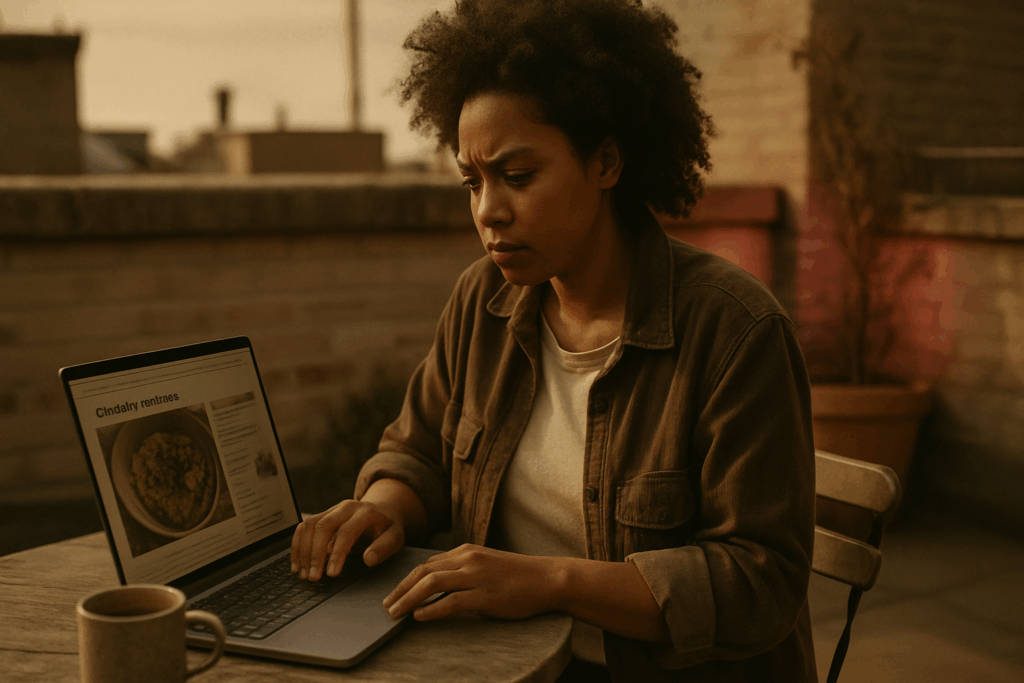Global Palates, Local Screens
In 2026, food doesn’t go viral by accident. Social media platforms TikTok, Instagram, YouTube aren’t just reflecting what we eat, they’re deciding it. A dish that pops on camera can ripple across continents by lunch. These feeds have become testing grounds for bold experiments and breakout flavors think street food collabs, cross cultural mashups, and zero waste cooking.
What trends right now? Fusion recipes that blur borders, plant based takes on comfort classics, and visuals that punch through the scroll. Food is designed to be screenshot first, tasted second. It’s not just how good it is it’s how good it looks moving across a five inch screen. The best bites come plated with color theory, natural lighting, and a sharp edit. Flavor meets filter, and the winner gets shared, saved, and replicated worldwide.
Viral Recipes and DIY Dining
TikTok has flipped the script on home cooking. What used to be a private, often messy kitchen ritual is now public performance art and anyone can go viral. Remember the baked feta pasta that took over everyone’s feed? That wasn’t a one off. It was a model. Social food trends move fast now, but the structure sticks: quick setup, bold visuals, familiar ingredients, and a payoff that feels doable.
This kind of rapid fire, cinematic recipe content has lowered the bar to entry. Professional skills aren’t required just a phone, a basic grocery list, and a minute of your viewer’s time. People want to cook, sure. But more than that, they want to feel competent fast. Visual hacks, recipe shortcuts, and gadgets like air fryers make that happen. Hashtags like #5MinuteMeals and #AirFryerHacks drive endless scrolls and just as endless attempts.
What’s emerging is a culture where food is equal parts nourishment and experiment. Gen Z and Gen Alpha aren’t afraid to try and tweak. TikTok isn’t just showing us what’s popular. It’s showing us how to mess with the familiar, remix the traditional, and make food fun again one scroll at a time.
Influencers as the New Food Critics

The era of the polished newspaper review is still alive but its influence is shrinking. Today, a 30 second reaction video filmed in the back of a ramen shop can sway more diners than a full page write up in a legacy magazine. Micro influencers with a few thousand highly engaged followers are telling the real time story of food culture now. Their content is raw, fast, and relatable.
People trust people. Not stars, not critics. It’s the unpolished kitchen demos, the facial expressions after the first bite, the behind the scenes prep footage that carries weight. Peer content, not professional polish, is what builds credibility.
Restaurants are responding. It’s not about collecting rave reviews anymore, it’s about collecting shares, story mentions, and TikTok tags. A dish going viral on Instagram matters more than a Michelin mention, especially for smaller spots looking to build buzz fast. The game has changed and it’s playing out in the hands of creators with smartphones and opinions.
Cultural Rediscovery Through Digital Lenses
In an online world obsessed with the new, it’s heritage that’s quietly going viral. Young content creators across the globe are doing something unexpected: turning the camera toward their roots. Recipes once passed down by word of mouth, usually found only in grandparents’ kitchens, are now being preserved on Instagram reels and YouTube shorts. Think millet rotis from southern India, Georgian khinkali, or old school Polish pierogi now making fresh rounds on feeds.
This is cultural memory, rendered snackable. But don’t mistake it for nostalgia alone. These creators aren’t just replicating dishes they’re documenting techniques, cultural context, and personal stories. It’s food anthropology in 60 seconds.
What’s making it stick? Authenticity. These moments feel less polished, more human. The kind of content that invites conversation in the comments and encourages others to dig into their own family memories. In the process, platforms are becoming accidental archives full of flavor and full of history.
For more examples of how old recipes are finding new life, check out Traditional Dishes Making a Comeback Around the World.
The Double Edged Fork
When Flavor Meets Attention Economy
Social media’s algorithms aren’t built to promote balance they’re tuned to reward instant gratification. This often means spotlighting the most visually striking and indulgent dishes:
Over the top creations packed with cheese, chocolate, or multi step layering
Slow motion pours, dramatic cheese pulls, and sizzling ASMR videos
Excess over nutrition, driven by the quest for clicks and shares
While entertaining, this kind of content often sidelines messages around mindful eating and sustainability.
Content or Consumption?
As food becomes content, the distinction between what’s made to be eaten and what’s made to be watched is fading.
Viewers are caught between inspiration and overwhelm
Viral recipes prioritize shock value over substance
Nutritional transparency is rarely part of the recipe
This transformation can lead to an unhealthy relationship with food glorifying abundance while ignoring balance.
A Growing Concern
More creators and consumers are beginning to question the dietary impact of the content they engage with:
Is what performs best also what’s best for us?
Are we learning to cook, or just learning to crave?
Can creators find a responsible balance between entertainment and education?
Questions like these will shape the evolution of food content moving forward. There’s promising space for creators who blend visual appeal with value offering not just viral bites, but also informed ones.
Bottom Line: Filters with Flavor
Social media’s impact on food extends far beyond recipes and restaurant reviews. It’s not just transforming how we eat it’s fundamentally altering why we eat. In 2026, food is as much about expression as nutrition.
From Appetite to Algorithm
What once started with a craving now often begins with a scroll. A visual of loaded dumplings or a trending smoothie bowl can spark dinner plans, not hunger pangs. Eating has become a reactive activity driven by content, not just an internal need.
Food choices are increasingly influenced by visibility and shareability
People eat for the post: aesthetic appeal often overrides tradition or nutrition
Culinary trends are shaped by platform trends, not always taste or culture
Where Identity Meets Consumption
Food is becoming a type of personal branding. Online, users often align their eating habits with values, aesthetics, and even social movements.
Vegan? Organic? Cultural revivalist? Your plate says it before you do
Food content helps creators signal identity and belonging
Dishes double as lifestyle declarations and social statements
A New Daily Question
The traditional “What’s for dinner?” has morphed into a much more socially driven query:
« What’s trending now? »
Dinner is no longer just a meal it’s a chance to join a moment, a meme, or a movement. And in an era where digital life shapes real life decisions, that influence isn’t fading anytime soon.
